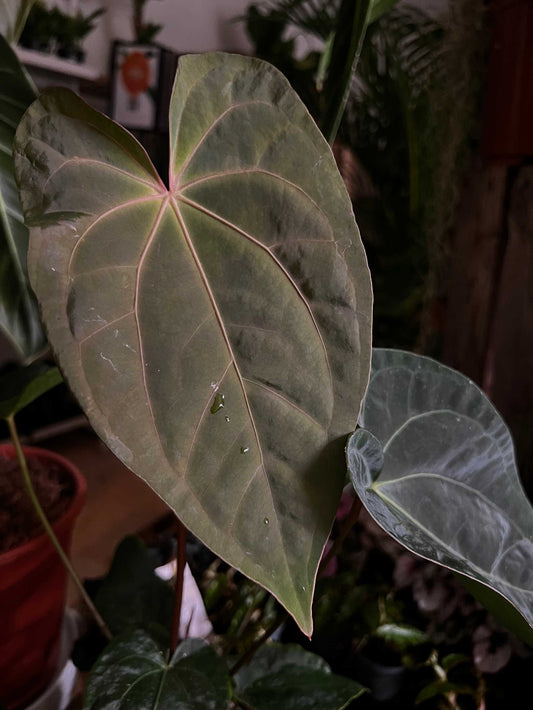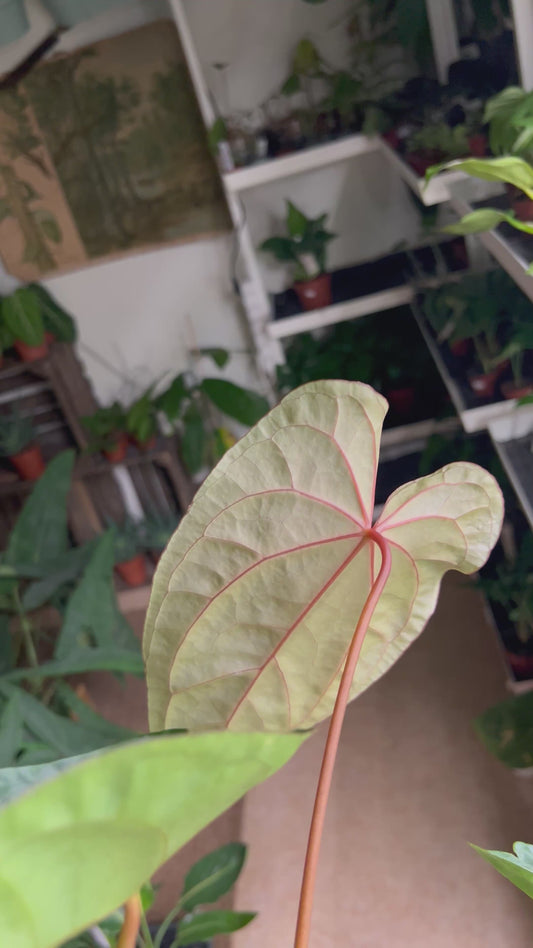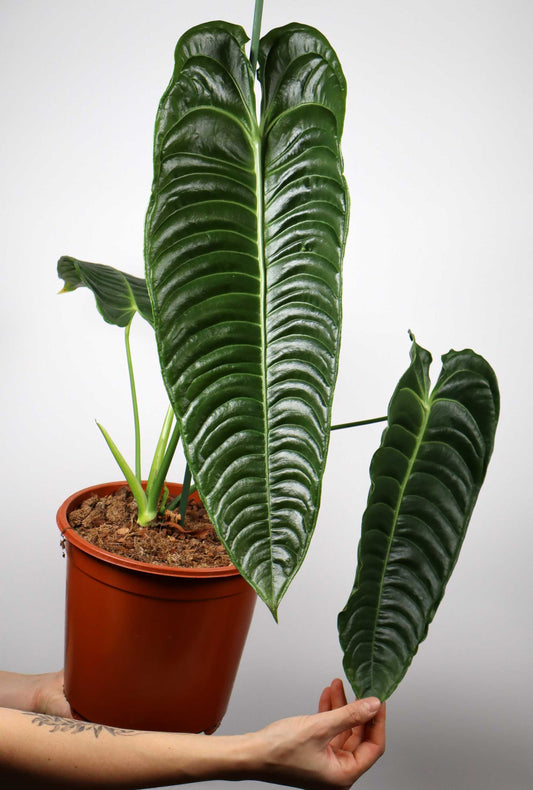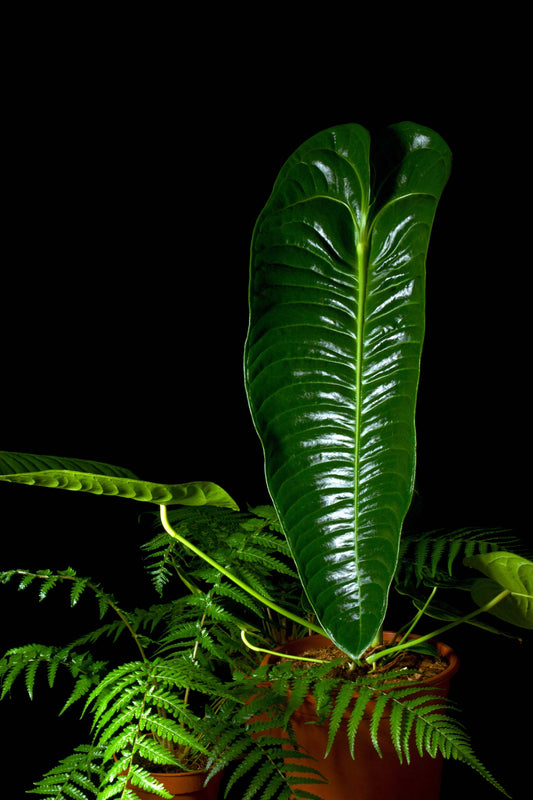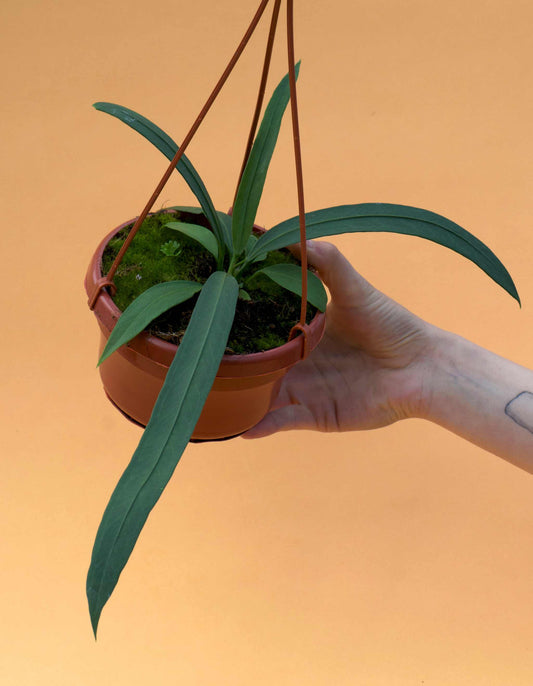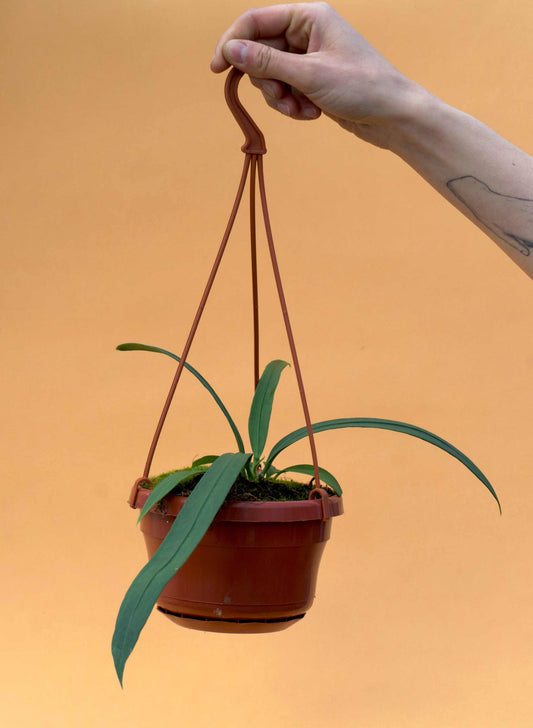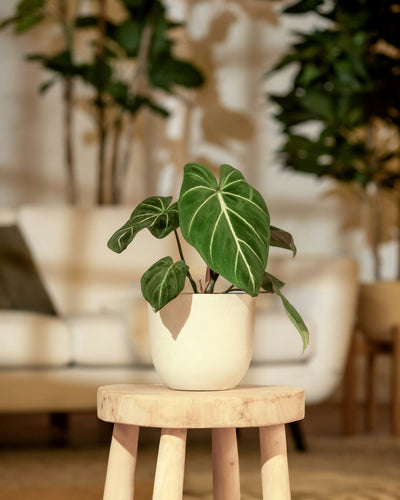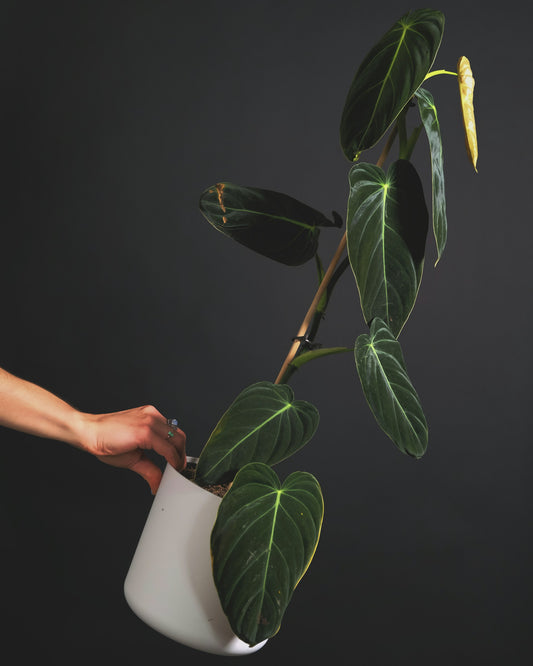Share
Anthurium care instructions
Anthurium is a tropical houseplant that thrives indoors. It belongs to the genus Anthurium , a genus of cold-hardy plants from Central and South America. Anthurium thrives in low light levels because it naturally grows in the shade of the large trees of the rainforest . This makes this plant a relatively easy plant to grow indoors . In this guide we will go through some simple tips and advice that can make it easy for you to make your anthurium thrive in your home.
Let's jump right into the story of this unusual plant from the tropics.
Anthurium magnificum x luxurians , an example of a hybrid between two varieties to highlight the beautiful features of the parent plants. This variety has large green bubbly leaves.
We mainly grow and sell Anthurium for its large leaves , although there are also varieties that are grown for their exotic flowers.
Examples of anthuriums grown for their beautiful flowers are the rose anthurium and the flamingo flower. The main difference is the flower's pistil, which on the flamingo flower curves like a beak.
However, in this section we focus on leafy plants such as Anthurium luxurians, Anthurium warocqueanum, Anthurium Veitchii, Anthurium crystallinum and clarinervium also called 'Nervkalla'.
Anthurium crystallinum is a very beautiful houseplant with large green leaves and veins that sparkle.
A big difference between Anthurium and other cold-hardy plants is that Anthuriums usually bloom indoors . This has fueled the trend, as you can create your own hybrids at home with a couple of plants by cross-pollinating the flowers with each other. It also helps that most Anthurium varieties Easily propagated from seed, compared to other cold-hardy plants.
In addition to being one of the most popular houseplants, anthuriums are also indoor air-purifying plants. Due to their large leaves, they have been shown to be good at picking up pollutants from the air. The leaves of this flowering houseplant can also be at least as beautiful as the flowers, making them very trendy houseplants.
But how do you care for an Anthurium?
Anthurium hookeri, also called 'bird's nest anthurium'.
Anthuriums thrive best in partial shade. Place the plant in a room with indirect light, a grow light or two won't hurt. A south-facing window in winter, protected by a curtain in summer, is excellent for these unusual houseplants.
Anthuriums produce aerial roots along the stem . These help the plant collect moisture from the air, just like orchids. These aerial roots are very susceptible to root rot if the wrong soil is used.
Use a well-drained soil with plenty of perlite and bark. The best planting soil is one that helps keep the roots moist at all times without drowning.
The soil should not dry out completely between waterings, Anthurium thrives in moisture.
We do not recommend growing these green indoor plants in regular potting soil. Regular soil becomes too compact over time and eventually leads to a risk of root rot.
Many anthurium species can also be grown without soil, for example in leca balls, sphagnum moss or pumice in stylish orchid pots that allow the roots to breathe.
You can buy orchid pots for your Anthurium here!
Can you propagate Anthurium yourself?
It is actually quite easy to propagate anthurium by self-pollination or cross-pollination of the flowers. Anthurium blooms easily indoors for most people. The flower looks like a small green bulb that hides a so-called 'spadix' inside. This spadix is the flower itself and will first show the female sex. The picture shows a female flower secreting nectar.
This female phase is followed by a male phase after just over a month. Then the flower instead secretes pollen which can be collected and frozen until the next flower appears. This pollen can then be sprinkled on top of the flower's nectar through so-called self-pollination. It is also possible to cross-pollinate different Anthurium species but we can go into more detail about this in another guide.
Ripe anthurium 'berries' containing seeds.
After a couple of weeks, the cob will develop small green berries that after a couple of months will start to change color to red. The red color means that the fruit has ripened and that there are seeds inside.
These seeds are cleaned from the red berry and planted preferably in moist sphagnum moss. They are relatively easy to sow and usually give their first shoot within a couple of days. However, these little anthurium babies are slow growing at first before they often shoot off after a few months.
You can buy sphagnum moss to sow your own small plants here!
Take shoots and cuttings.
You can also carefully divide your anthurium's new shoots , which often appear at the stem. If a small leaf suddenly appears from the root of your large green plant, there is a high probability that it is a small anthurium, ready for repotting.
When planting, place the cuttings in separate pots with Anthurium soil. This way you can create a whole collection of these unusual plants.
A cutting of Anthurium luxurians with characteristically bubbly leaves
Summary.
Anthurium is one of our most unusual plants. The large, leathery, shiny leaves and exotic flowers make anthurium a unique interior detail.
Some varieties can grow incredibly large leaves and quickly become a large potted plant that fits perfectly into a heated greenhouse or conservatory. The tropical feeling this green plant contributes is difficult to describe with just words and pictures.
With us you can order these plants online. We have a large selection of cheap Anthurium hybrids and a wide range of other popular houseplants online. We also have everything you need to care for your tropical houseplant, from good soil to cheap pots and accessories that make care easy.




